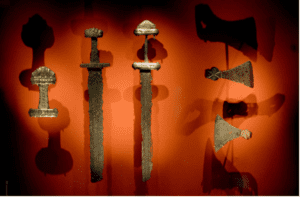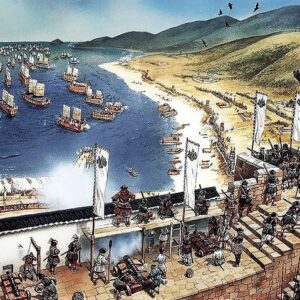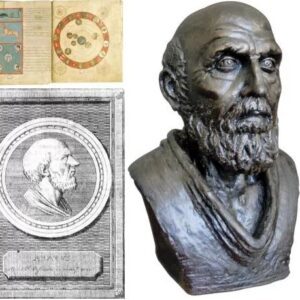
The discovery made by two friends in Stavanger, Norway is providing unprecedented insights into Viking history in the British Isles and has the potential to reshape our understanding of the past. While they had set out with hopes of uncovering buried treasure, what they stumbled upon is proving to be even more priceless.
The Gausel Queen
Two companions took their metal detectors to Jåttå, a region in western Norway where the famous “Gausel Queen” was discovered in 1883. The term “Gausel Queen” refers to the burial site of a prosperous Viking woman who was interred with an array of valuable items from Norway and Ireland. The site is one of the most opulent graves ever discovered for a Viking woman, containing a collection of silver arm rings, fragments of silver and bronze, pearls, knives, and even components of a casket that were probably acquired from somewhere in the British Isles.

The link between the Gausel Queen and Ireland holds significant importance, considering the Vikings’ notoriety for raiding in the region and establishing the city of Dublin. In 841 CE, Viking settlers arrived, establishing a trading center that expanded into other parts of Western Europe. Though expelled from the region in 902, the Vikings returned in 917 and developed Dublin into a prosperous hub for innovation and wealth. This is evident in the numerous hand-crafted metal artifacts and shipbuilding remains discovered throughout the city in archaeological excavations.
The Unearthing of This Treasure Was an Unprecedented Discovery, Unlike Anything Previously Found
Upon discovering the fragments of the Viking sword hilt, the friends dutifully turned them over to the government as mandated by law. While the blade of the sword was not found, the pieces of the hilt are of tremendous value to archaeologists. The hilt features intricately carved silver and gold animal motifs, similar to other sword styles prevalent in the Iron and Viking Ages, which lasted from 550 to 1050 CE. The three unearthed fragments consist of the primary body of the hilt and two side components that would have extended outward, forming a T-shape.

According to Zanette Glørstad, an archaeologist from the University of Stavanger’s Museum of Archaeology, “The workmanship is of exceptionally high quality, and the intricate and elaborate decoration, as well as the unique shape of the cross guard, makes this an unparalleled discovery.” Additionally, the sword’s style indicates that it was probably brought from another European region. Out of the roughly 300 Viking swords discovered in Norway, only about 20 resemble the Stavanger sword.
Experts hypothesize that the exquisite details of the sword were crafted in England or France circa 800 CE. These remarkable findings have revised the conventional understanding of the Jåttå/Gausel region, which was previously thought to be an area characterized by Viking alliances and plundering. “The sword’s location in close proximity to the Gausel Queen site necessitates a fresh perspective on the entire Jåttå/Gausel area,” noted Stavanger researcher Håkon Reiersen. The sword’s discovery, as well as that of the Gausel Queen burial site, suggest that Gausel may have served as a prominent hub for commerce and communication across the North Sea.
The secrets of the sword
The sword’s construction involves the use of silver and gold, as well as special metalworking techniques such as “niello,” a black metallic alloy that enhances the definition of the silver designs. In a statement issued by the Museum of Archaeology at the University of Stavanger, Glørstad provided further details regarding the sword’s origin: “The sword is most likely a D-sword, which is one of the most intricately decorated and heaviest sword types from the Viking Age… The lower hilt is adorned in the same style as the grip, and at each end, the hilt is shaped like an animal head. The closest known parallel is a sword discovered in an 8th-century grave on the Scottish island of Eigg.”

Examples of Viking swords displayed at the British Museum in London
At the Museum of Archaeology at the University of Stavanger, the sword is presently undergoing restoration, with researchers meticulously removing layers of dirt and debris that have accumulated over the years, obscuring the intricate animal designs. Conservator Cora Oschmann expressed her thoughts on working on such a significant artifact, stating that “it is very thrilling to work on a discovery like this. It is difficult work, but we are uncovering new details every day.”





